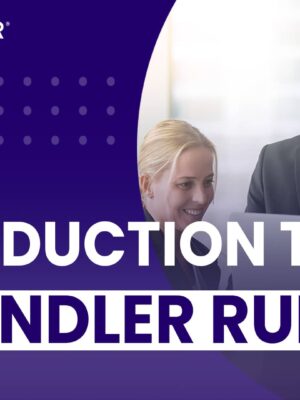The “Problem” With Referral Selling
We all understand that generally speaking referred prospects will accelerate through the sales pipeline at a much faster rate than other types of opportunities, and they will also be more receptive towards providing future referrals.
Did you know that?
- 40% of salespeople are failing in their sales careers.
- 45% of all salespeople earn the average income for their industry.
- A typical salesperson devotes only 10-20% of their time to actual selling because a large proportion of their available time is devoted to cold calling.
- 85% of all salespeople do not generate enough quality referrals.
- Salespeople who actively seek and exploit referrals earn 4 to 5 times more than salespeople who don’t.
- Referral business closes and converts more than 70 percent of the time.
What are the biggest barriers to getting referrals?
If asking for referrals has not been included and communicated in the sales process, this will deter salespeople’s focus as they will see asking for referrals as a ‘nice to do’ rather than a ‘must do’. This in turn usually means that there is no rigorous method for measuring and monitoring how many referrals are generated and what the conversion ratios are for closing referred customer business.
Energy goes where attention flows, so without specific attention to this salespeople are unlikely to invest their energy in this direction. (Even if they are firm believers in the positive impact that referrals can create!). For many salespeople asking for referrals is uncomfortable because they feel unsure about how to do this effectively, and they aren’t confident they will get their desired response.
If people don’t know how to do something and they believe that what they are doing will damage their existing relationships, then it’s better to avoid it all together. Additionally, if salespeople make the common mistake of asking for referrals too early on in the relationship this can result in more refusals that further erode salespeople’s confidence.
Therefore, to optimise the use of referral-based selling the following components are vital:
- Asking for referrals and acting on them needs to be incorporated in the overall sales process.
- Metrics around referrals should be sought and evaluated on a regular basis, because this contributes towards furthering the rationale for generating them.
- Development and training needs to be delivered to the sales team so they can maximise the impact of referrals and feel confident with this skill.
When is the best time to ask for referrals?
People will freely give referrals when they have benefited from your product/service and have an established relationship with you. This rarely occurs during the initial meeting because whilst they may like you, they haven’t yet validated what you can do for them. That’s why asking for referrals should be when the relationship you have established is strong enough to ensure their trust and belief in you.
Assessing the strength of your existing customer relationships can be very subjective unless there is a meaningful set of relationship criteria in place. Although these will vary from organization to organization, they may include factors like:
- Communication frequency with key influencers
- Satisfaction with product/service
- Speed of response to queries/problems
- Length of relationship
The customers with the highest scores (based on the relationship criteria) are those that should be approached for referrals
What is the best way of generating referrals?
- Prepare a description in the form of a criteria list that specifies the type of person or organization that you are looking to approach. This should be based on the profile of your “Ideal Customer.”
- Evaluate all your customers using a relationship criteria and identify a list of those with the highest scores. For every customer your aim is to generate a minimum of 5 referrals. Therefore, if you have 25 customers on your list, your target number of referrals will be 125.
- Contact each customer on your list and take the pressure of them by explaining that you don’t want to sell to them, you would like their help. For example: “Do you know anyone who is (specify your criteria) that would be interested in learning about how our products/services can benefit them?” Preface your question with a softener such as: “I wonder if you can help me” or “I would really appreciate some advice.”
- When customers give you referrals, ask their permission to use their name when making contact. Alternatively, where your relationship is ‘rock solid’ ask customers to make the initial introduction by letter or email. Often customers will give a glowing testimonial and create a relevant context when introducing people.
- Thank customers for referrals and keep them apprised of your progress. This creates a positive association towards the giving of more referrals in the future.
Problem solved!
Copyright © 2019 by Jonathan Farrington All rights reserved. No part of this publication may be reproduced, distributed, or transmitted in any form or by any means without permission of the publisher.








